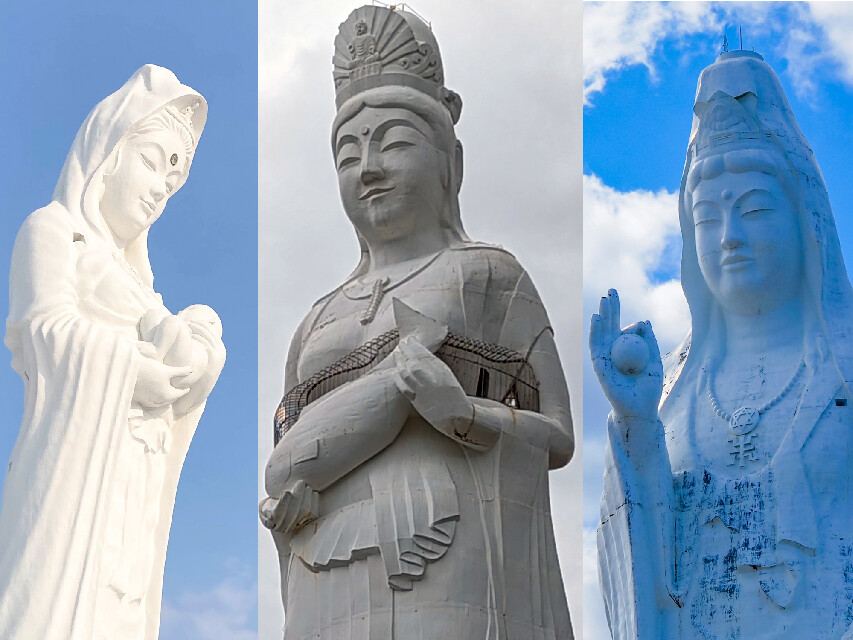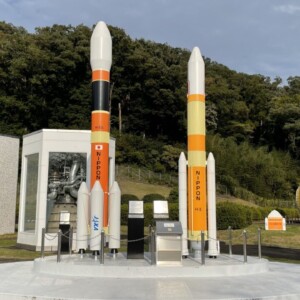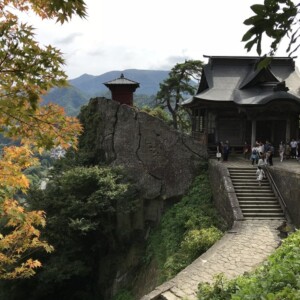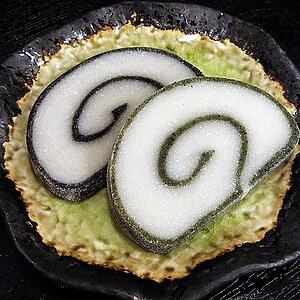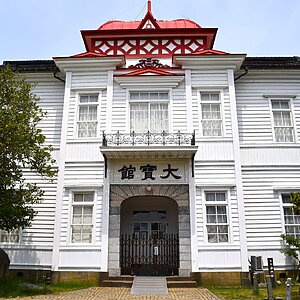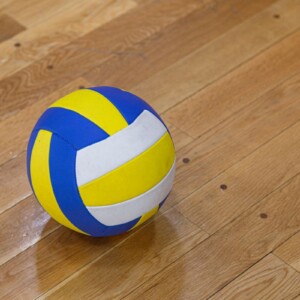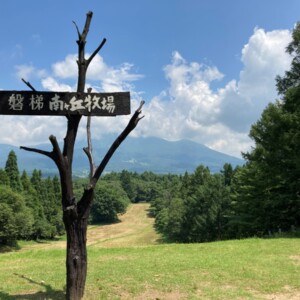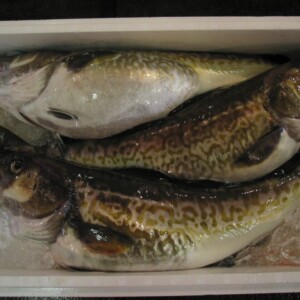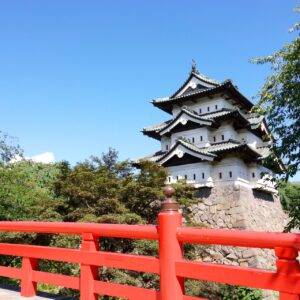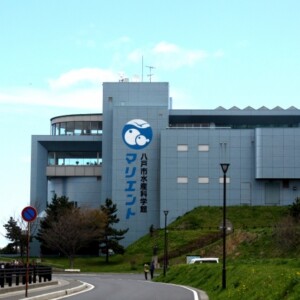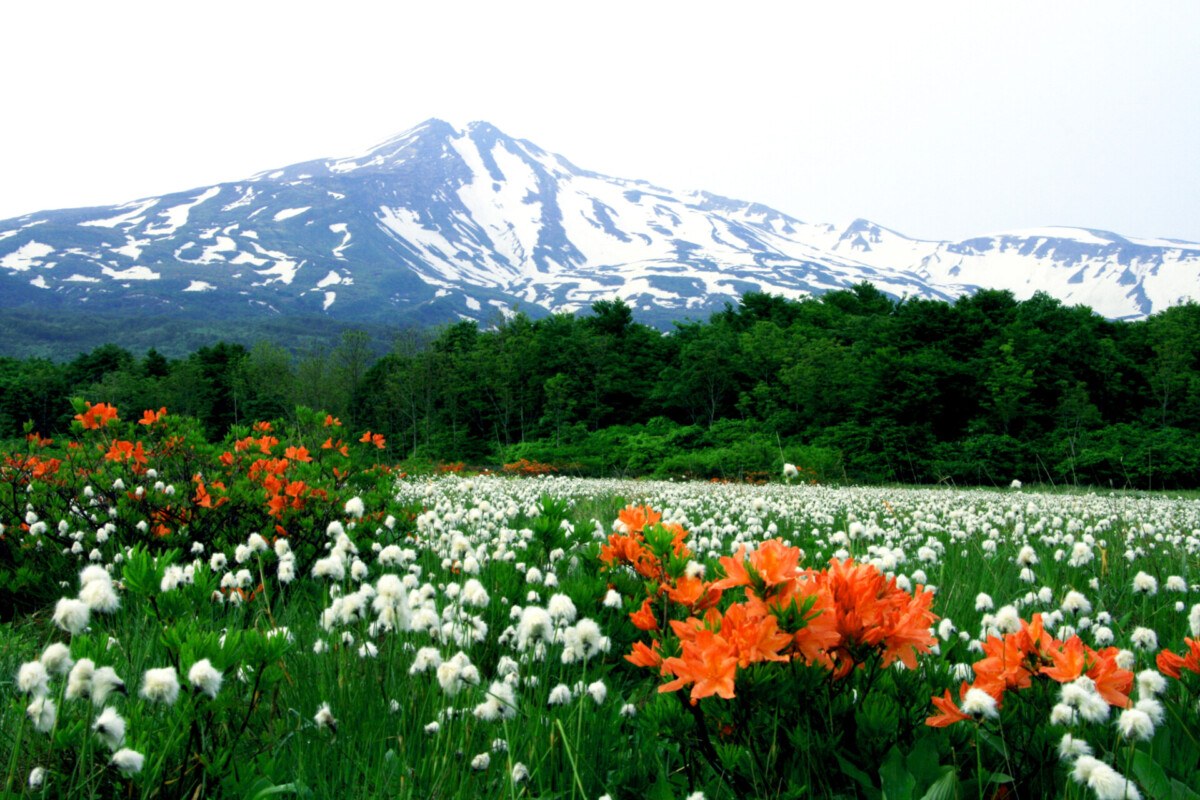
[Chokaisan and Tobishima Geopark: Yurihonjo Edition] A strata from when Japan was the Eurasian continent can be seen
table of contents
- 1 Chokai-Tobishima Geopark is made up of four areas. The Yurihonjo area is themed around the mysteries of the Earth
- 2 Ishizawa Falls: Flowing through layers of rock from the time when the Japanese archipelago was part of the Eurasian continent
- 3 Akata Falls, where two streams join and fall from above the fault
- 4 Approximately 9 meters tall. One of Japan's three major Hase Kannon temples, the "Akata Great Buddha"
- 5 Shinzan Park is a hill formed by the uplift of new andesite rocks 8 million years ago
- 6 "Hottai Falls" selected as one of the "Top 100 Waterfalls in Japan"
- 7 Kuwanokidai Marsh, where the lily flowers that gave rise to the name "Yuri" bloom
- 8 Super soft water. The famous "Botsumeki Spring Water" is used for the local tap water and craft beer
- 9 Articles related to Mt. Chokai and Tobishima Geopark
Yurihonjo City occupies approximately 70% of the Yuri region, which spreads out at the foot of Mount Chokai (2,236m) a small plain formed along the Sea of Japan coast at the mouth of the Koyoshi River, a first-class river
During the Edo period, the area was divided into three small domains: Honjo Domain, Kameda Domain, and Yashima Domain. , Honjo Prefecture, Kameda Prefecture, and Yashima Prefecture were established, but were soon incorporated into Akita Prefecture.
Mount Chokai, towering south of Yurihonjo City, is a rare free-standing peak that rises from 0m above sea level over the Sea of Japan. Since ancient times, it has been revered as a mountain that breathes fire, and today it is loved by people as a mountain where traces of volcanic activity and precious natural beauty remain
Chokai-Tobishima Geopark is made up of four areas. The Yurihonjo area is themed around the mysteries of the Earth
Chokai-Tobishima Geopark is centered around Mt. Chokai and includes the Yurihonjo area , the Sakata area (Sakata City, Yamagata Prefecture) , the Yuza area (Yuza Town, Yamagata Prefecture), and Tobishima (Sakata City) to the south, the Nikaho area (Nikaho City, Akita Prefecture) to the north , each with its own unique character. In the Yurihonjo area in the northeast, you can experience the mysteries of the earth, such as exposed geological strata from when the Japanese archipelago was still part of the Eurasian continent, long before Mt. Chokai was formed.
Ishizawa Falls: Flowing through layers of rock from the time when the Japanese archipelago was part of the Eurasian continent

Ishizawa Otaki Falls is located in Ishizawa Valley the Sasamori Hills in the center of Yurihonjo City, where strata from about 30 million years ago are exposed over a distance of about 8 km
30 million years ago, Japan was still attached to the eastern edge of the Eurasian continent, and of course there was no Sea of Japan. The Japanese archipelago separated from the continent about 20 million years ago, so this stratum is 10 million years older than that
At the time, the Earth was erupting from all over, and the strata of Ishizawa Valley andesite, formed . Cliffs made of andesite continue throughout the valley, and there are viewpoints such as Ishizawa Otaki Falls and Byobuiwa Rock Near Byobuiwa Rock columnar . The road is closed in winter (December to late April), so it is not possible to visit.
Ishizawa Falls and Byobuiwa Rocks <Information>
- Location: Nishinokado, Oyanagi, Yurihonjo City, Akita Prefecture
- Phone number: 0184-24-6376 (Yurihonjo City Tourism Culture and Sports Department Tourism Promotion Division)
- access:
- Train: Approximately 40 minutes by car from JR Ou Main Line Ugo-Honjo Station (Road closed from December to late April)
- By car: Approximately 25 minutes from Honjo IC on the Nihonkai Tohoku Expressway, or approximately 40 minutes by car from JR Ugo-Honjo Station (Road closed from December to late April)
- Toilet: Yes
- Shops and rest areas: None
Google Map
Akata Falls, where two streams join and fall from above the fault
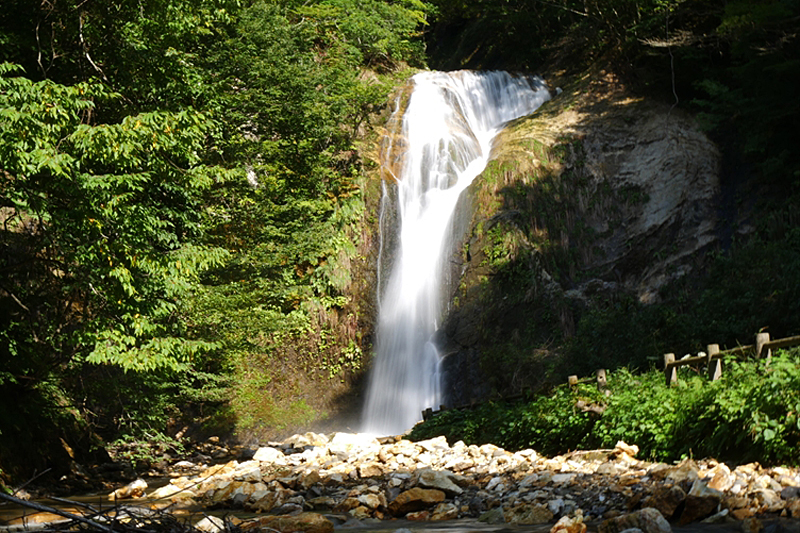
Akata Falls is a 23m waterfall located in the northern part of Yurihonjo City. The waterfall splits into two at the top, with the larger flow being called "Otoko-taki" and the other being "Metaki" (female waterfall) . The geology in this area is complex, and the white rocks at the top are rhyolite, formed when lava from an undersea volcano cooled and solidified between 2,300 and 5 million years ago, when this area was under the sea. The waterfall is said to have been formed on a fault line running north to south.
Akada Otaki <Information>
- Address: Akada, Yurihonjo City, Akita Prefecture
- Phone number: 0184-24-6376 (Tourism Promotion Division, Tourism, Culture and Sports Department)
- access:
- Train: Approximately 40 minutes by car from Ugo-Honjo Station on the JR Ou Main Line
- By car: Approximately 25 minutes from Honjo IC on the Nihonkai Tohoku Expressway
- Toilet: Yes
- Shops and rest areas: None
- Parking: Yes
Google Map
Approximately 9 meters tall. One of Japan's three major Hase Kannon temples, the "Akata Great Buddha"
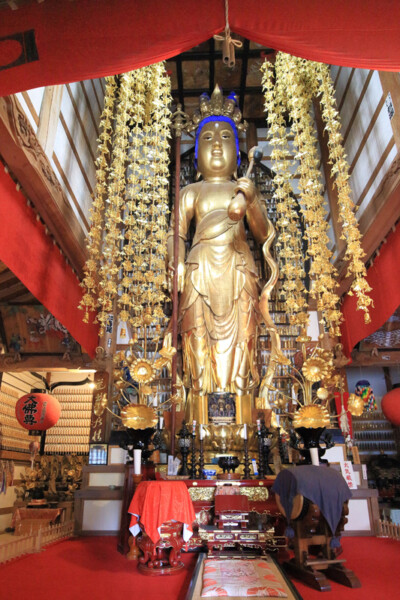
The "Akata Great Buddha" is a Kannon statue approximately 9m tall (approximately 7.878m excluding the pedestal) enshrined in the Great Buddha Hall of Hasedera Temple, a temple that was the center of Akata, a training ground for mountain ascetics (yamabushi) since ancient times. It is known as the "Akata Great Buddha, and is counted as one of Japan's three major Hase Kannon temples , alongside in Nara Prefecture (Sakurai City, Nara Prefecture) Hasedera Temple
Hasedera Temple is said to have been founded in 1775 by Zen priest Zesan of the Soto sect, and was a place of prayer for the Kameda domain, which ruled the area during the Edo period. The principal image, the standing Eleven-Headed Kannon Bodhisattva , was destroyed along with the Great Buddha Hall in a great fire in 1888 (Meiji 21). The current Kannon statue was restored in 1892 with a donation from a philanthropist, and the Great Buddha Hall was also rebuilt in 1893 (Meiji 26). Hasedera Temple is the 8th temple of the Thirty-Three Kannon Pilgrimage in Akita Prefecture, and the Eleven-Headed Kannon Bodhisattva is a designated cultural property of Yurihonjo City.
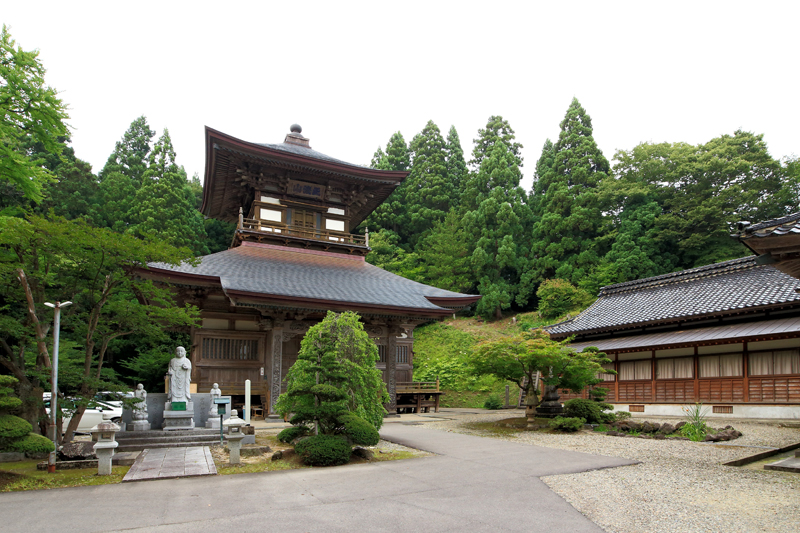
Akada Great Buddha <Information>
- Facility name: Shohozan Hasedera Temple
- Address: 115 Akada Ueda Omote, Yurihonjo City, Akita Prefecture
- Phone number: 0184-22-1349 (Shohozan Hasedera Temple)
- Free to visit
- access:
- Train: From JR Ou Main Line Ugo Honjo Station, transfer to Honjo Office and take the bus bound for Akada Daibutsu for approximately 30 minutes, or take a taxi from JR Ou Main Line Ugo Iwatani Station for approximately 7 minutes
- By car: Approximately 17 minutes from Honjo IC on the Nihonkai Tohoku Expressway
Google Map
Shinzan Park is a hill formed by the uplift of new andesite rocks 8 million years ago
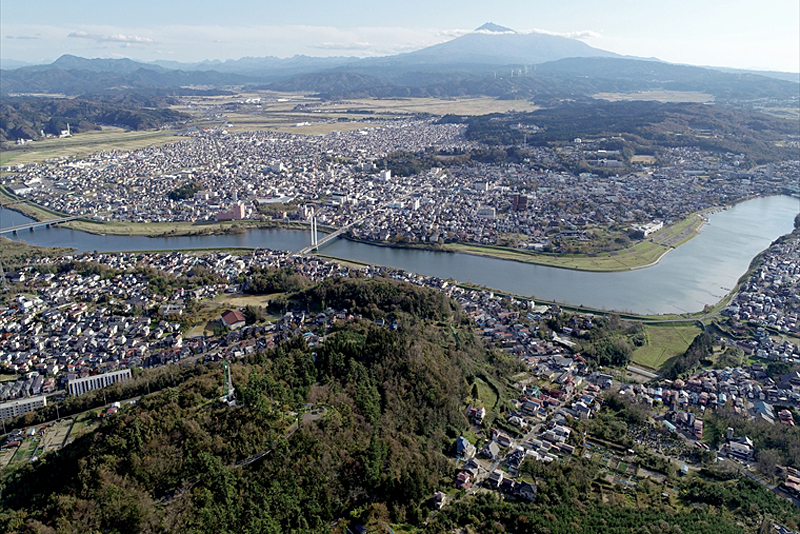
Shinzan Park is at the mouth of the Koyoshi River . The geological strata around this area are the result of volcanic ash and lapilli that were erupted by undersea volcanoes about 8 million years ago, when the area was still a shallow seabed, and they were uplifted and revealed over 100,000 years ago. The layer of volcanic ash and other rocks is about 200m thick and is called "neo-andesite."
Niiyama Shrine was built in Niiyama Park the "Hadaka Mairi" (naked pilgrimage) is held here, a remnant of the time when this area was a training ground for monks. Niiyama Park is also popular as a park where you can enjoy cherry blossom viewing for a long period of time in the spring, from the Somei Yoshino cherry trees in the 100m area to the Yamazakura cherry trees in the 140m area.
Niiyama Park <Information>
- Location: Ishiwaki Kamichoronuma, Yurihonjo City, Akita Prefecture
- Phone number: 0184-24-6376 (Yurihonjo City Tourism Culture and Sports Department Tourism Promotion Division)
- URL: Niiyama Park
- access:
- Train: Approximately 10 minutes by car from Ugo-Honjo Station on the JR Ou Main Line
- By car: Approximately 15 minutes from Honjo IC on the Nihonkai Tohoku Expressway
- Toilets: Available (closed in winter)
- Shops and rest areas: None
- Parking: 15 standard-sized cars
Google Map
"Hottai Falls" selected as one of the "Top 100 Waterfalls in Japan"
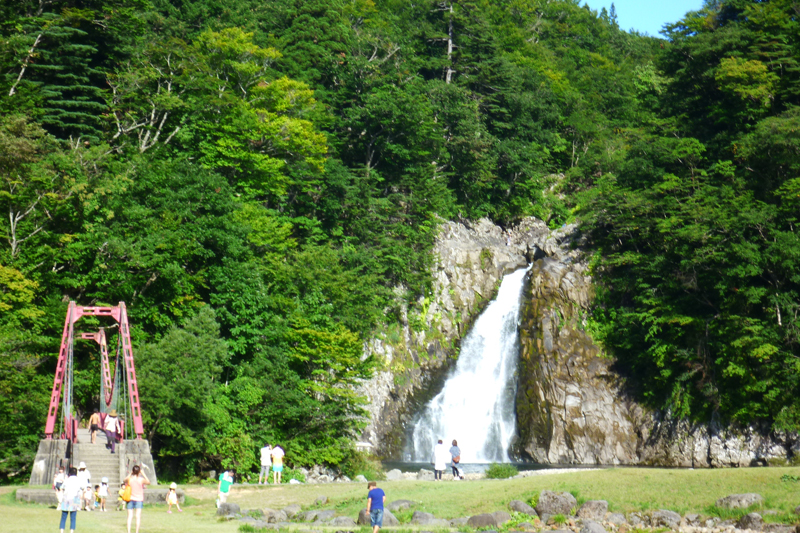
Hottai Falls is a waterfall located in Tamada Valley , the source of the Koyoshi River, on the slopes of Mount Chokai It is a famous waterfall that has been selected as one of the "100 Best Waterfalls in Japan
It is said that Houtai Falls was formed when a single sheet of lava flowed out during the eruption of Mt. Chokai about 100,000 years ago and dammed up a river. The lava that created the waterfall is called "Houtai Lava," and you can walk on it. It has been designated as a Place of Scenic Beauty and a Natural Monument by Akita Prefecture
Houtai Falls <Information>
- Location: Hyakutaku, Chokai-cho, Yurihonjo City, Akita Prefecture
- Phone number: 0184-57-2205 (Yurihonjo City Tourism Association Chokai Branch)
- access:
- Train: Approximately 50 minutes by car from Yajima Station on the Yuri Kogen Railway
- By car: Approximately 70 minutes from Honjo IC on the Nihonkai Tohoku Expressway
- Toilet: Yes
- Parking: Yes
Google Map
Kuwanokidai Marsh, where the lily flowers that gave rise to the name "Yuri" bloom

Kuwanokidai Marsh spreads across an area about 700m above sea level on Mount Chokai, and was formed by the accumulation of a rock avalanche that occurred in prehistoric times. It covers an area of 8 hectares (about the size of two Tokyo Domes), and boardwalks have been constructed within the marsh, allowing you to enjoy trekking while looking out at Mount Chokai.
The marshland Asian skunk cabbage and cotton grass , creating a beautiful sight throughout the seasons. In particular, in early summer, you can see the white cotton grass , a plant in the lily family that is said to be the origin of the name "lily") , and the clusters of Japanese azalea, creating a beautiful contrast of white and orange that colors the marshland.
Kuwanokidai Marsh <Information>
- Location: Arazawa, Yajima-cho, Yurihonjo City, Akita Prefecture
- Phone number: 0184-24-6376 (Yurihonjo City Tourism Culture and Sports Department Tourism Promotion Division)
- access:
- Train: Approximately 40 minutes by car from Yajima Station on the Yuri Kogen Railway
- By car: Approximately 60 minutes from Honjo IC on the Nihonkai Tohoku Expressway
- Toilets: Available (closed in winter)
- Parking: 15 standard-sized cars
Google Map
Super soft water. The famous "Botsumeki Spring Water" is used for the local tap water and craft beer
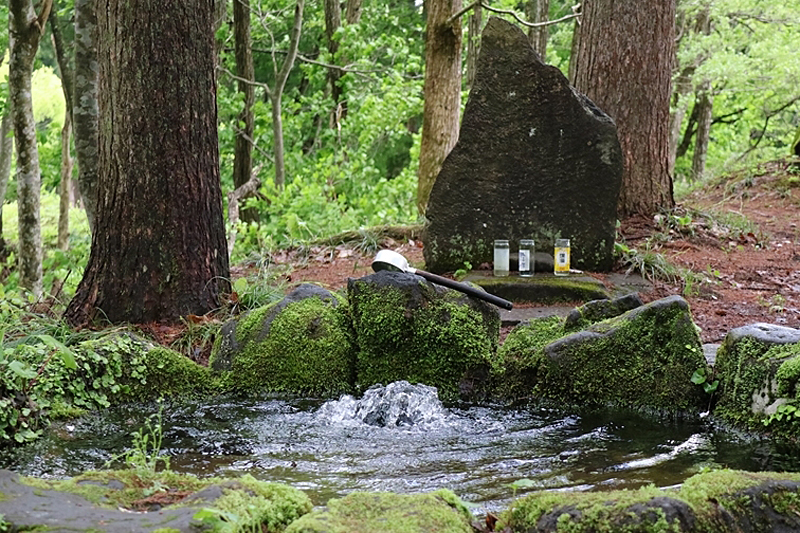
Botsumeki Spring springs Mount Yashio , which rises 713mm above sea level and stands on the opposite bank of the Koyoshi River at the foot of Mount Chokai. The spring produces approximately 900 tons of water per day, and its temperature remains at approximately 9°C year-round, making it extremely soft with a neutral pH (6.9) and hardness of 19. Due to its soft texture, it is used as tap water in the area and in local craft beers. "Botsumeki ," including that it is a variation of the Ainu word "bubbles" "botsumeg" springing forth," but the exact origins are unknown. The area around the spring has been turned into a park, and many people visit to collect the water.
Botsumeki Spring Water <Information>
- Location: Higashiyuri Kurobuchi, Yurihonjo City, Akita Prefecture
- Phone number: 0184-24-6376 (Yurihonjo City Tourism Culture and Sports Department Tourism Promotion Division)
- access:
- Train: Approximately 35 minutes by car from Yajima Station on the Yuri Kogen Railway
- By car: Approximately 60 minutes from Honjo IC on the Nihonkai Tohoku Expressway
- Toilet: Yes
- Parking: Yes
- Other: Closed during winter
Google Map

In the Yurihonjo area of Mt. Chokai-Tobishima Geopark there are many other geosites where you can enjoy the nature of Mt. Kameda Fudo Falls, which has a drop of about 25m and a width of about 10m, the rare Katakinuma Wetland which is located in lowland at an altitude of 30m, the Yurihara Plateau (Higashi-Yurihara) , which is home to oil and natural gas fields. Why not visit Yurihonjo City to get a sense of the present state of the earth, which has changed over the long years?
Mt. Chokai-Tobishima Geopark <Information>
- Phone number: 0184-62-9777
- URL: Mt. Chokai-Tobishima Geopark Yurihonjo Area








![[Chokaisan and Tobishima Geopark: Yusa and Sakata Edition] Shonai Hirano is moist with the blessings of Mt. Chokaisan b5339749745ac9c7a01a8bb8dc81755e](https://jp.neft.asia/wp-content/uploads/2023/05/b5339749745ac9c7a01a8bb8dc81755e-150x150.jpg)
![[Chokaisan and Tobishima Geopark: Nikaho Edition (2)] Coexistence with nature brought about by the wisdom of our ancestors 1 Nikaho Plateau 2000 Nikaho City Cultural Property Protection Division](https://jp.neft.asia/wp-content/uploads/2024/10/28389310d744abdc1b4ca5d863e123e7-150x150.jpg)
![[Chokaisan and Tokishima Geopark: Tokishima Edition] Tokishima flourished in Kitamae Ship during the Edo period b78c09f26796b9608d6c3fb7a83ecc50](https://jp.neft.asia/wp-content/uploads/2023/05/b78c09f26796b9608d6c3fb7a83ecc50-150x150.jpg)
![[Chokaisan and Tobishima Geopark: Nikaho Edition (1)] Kujukushima, which is known alongside Matsushima, was landed in a major earthquake. 1999 Island Winter 1_Nikaho City Tourism Division](https://jp.neft.asia/wp-content/uploads/2024/10/9832b69b3165ff52241c17ad3f8bf591-150x150.jpg)
![The historical heritage of Yurihonjo City, which was established by three domains during the Edo period [Akita Prefecture] Tensagi Castle, a theme park that collects the history of the former Kameda domain ©Tabi Tohoku](https://jp.neft.asia/wp-content/uploads/2024/07/78f1019a234bb8928a04b0041a2a581d-150x150.jpg)
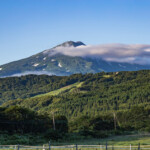
![The Wooden Toys Museum is making use of the entire abandoned school! Access by toy train [Yurihonjo, Akita Prefecture] 02 Chokaisan Wooden Toy Museum](https://jp.neft.asia/wp-content/uploads/2018/11/cce286efc423e9c7e7b7514902aaaac3-150x150.jpg)


